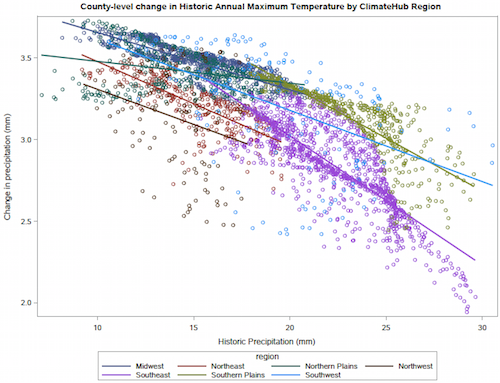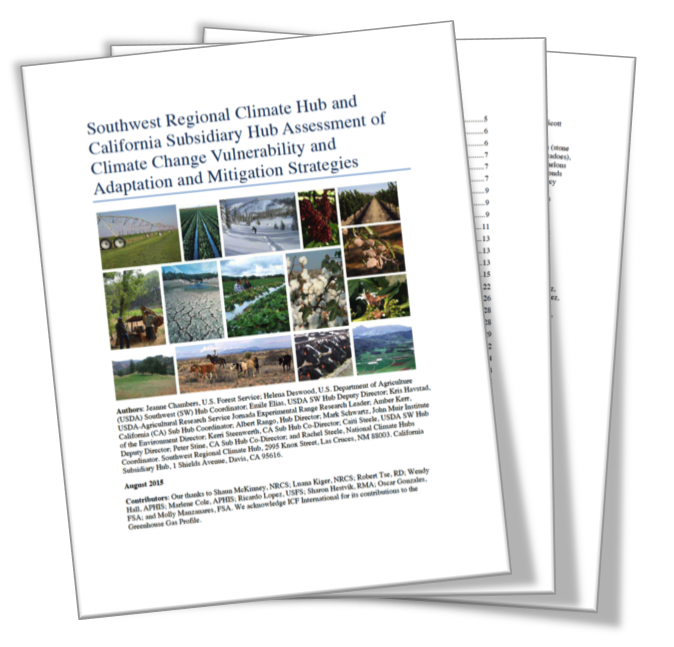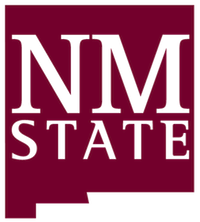- Data
- Videos
-
Publications & Research
-
Education
- Water Conservation Data Jam - Curriculum for 6th-12th Grade Students
- Climate Change and Wildfire – Curriculum Unit for 9-12 Grade Students
- Climate Change and the Carbon Cycle – Curriculum Unit for 9-12 Grade Students
- Where's Our Water? Water Conservation in the Southwest - Lesson for 6-8 Grade Students
- Climate Change and the Water Cycle - 10-Hour Curriculum Unit for 6-12 Grade Students
- The Effects of Climate Change on Agricultural Systems - 5-Hour Curriculum Unit for 6-12 Grade Students
- Cambio climatico y el ciclo del agua
- Webinars and Online Courses
- Websites
- News & Events
- About Us
- RMA
Webinars
2/22/2022
Rangeland managers have typically adapted to changes in weather by deploying a variety of management responses such as stocking rate manipulation, supplemental feeding, and vegetation manipulation. However, accelerating climate change has begun to transform rangeland socioecological systems. In addition to direct effects, climate change often greatly constrains the ability of managers to respond to other forces such as invasive species, economic cycles and consumer demands. Adaptation is the implementation of existing, accepted practices to respond to gradual change; while transformation requires substantial change that will result in new land uses, management systems and ecosystem services. This symposium examined likely transformative changes in climatic drivers, ecosystem functions and socioecological responses across North American rangelands. The symposium concluded with a panel discussion and Q&A session.
Speakers and Topics (click below for individual videos):
Brandon Bestelmeyer - Ecological transformations in desert grasslands: resist, accept, or direct?
Emile Elias - Indicators of observed and projected climate vulnerability and transformation in New Mexico
Anna Maher - Climate impacts, management challenges, and opportunities on U.S. northwest rangelands
Leslie Roche - Building climate resilience across California's working rangelands
Ken Spaeth - Evaluation of current rangeland conditions and trends on non-Federal rangeland community types
Dirac Twidwell - A new conservation movement to address biome-scale threats in Great Plains Grasslands
Hailey Wilmer - Ranching, rangelands and resilience: moving from buzzwords to boundary objects
8/18/2020
Grass-Cast: A Tool to Plan for Grass Availability During Drought with Brian Fuchs (National Drought Mitigation Center) and Dannele Peck (Northern Plains Climate Hub) and organized by Joel Lisonbee (NIDIS) and Emile Elias (Southwest Climate Hub).
Setting grazing plans and stocking rates can be especially challenging during a drought, such as the one currently afflicting much of the western United States. The Grassland Productivity Forecast tool, or Grass-Cast, can help provide insight into how the grass production through the summer will play out. The Grass-Cast tool covers the Great Plains region and has recently expanded to include Arizona and New Mexico, two states dealing with moderate to extreme drought. In this webinar, Brian Fuchs, Monitoring Coordinator with the National Drought Mitigation Center, and Dannele Peck, Director of the USDA Northern Plains Climate Hub, discussed the current drought conditions and what the Grass-Cast forecast tells us about the rest of summer.
8/5/2020
Weather, Drought, Aridity and Tools for Agriculture with Nancy Selover (AZ State Climatologist), Peter Goble (Colorado Climate Center) and Steph McAfee (Nevada State Climatologist).
This webinar was organized by the Drought Learning Network (DLN) Beginning Farmers and Ranchers team. The DLN links climate service providers with resource managers to increase landscape and community resilience in current and future drought. At this meeting, climate service providers shared information with and answered questions from beginning farmers and ranchers.
7/22/2020
Drought 2020 in Eastern New Mexico and the Southern High Plains - a conversation features experienced cattle growers discussing how they plan for and manage drought. New Mexico ranchers Mimi and Tom Sidwell and James Stewart explain how they plan for and manage their rangelands and herd during drought, how 2020 measures up to previous droughts, and their experience with marketing during COVID. NM State Climatologist, Dr. Dave DuBois, provides a drought update. This webinar is a collaborative effort of many partners through the Drought Learning Network, which aspires to link climate service providers with land managers to foster drought resilience.
7/9/2020
Colorado Drought Conditions, Outlook, and Fire Risk Webinar with Becky Bolinger (Colorado Climate Center), Tim Mathewson (Bureau of Land Management), and the National Integrated Drought Information System.
According to the June 30, 2020 U.S. Drought Monitor, 68% of Colorado was in drought, including most of Southern Colorado in Extreme Drought (D3) and even Exceptional Drought (D4) in the southeast corner. Conditions include parched ground, stressed vegetation and increased fire risk.









